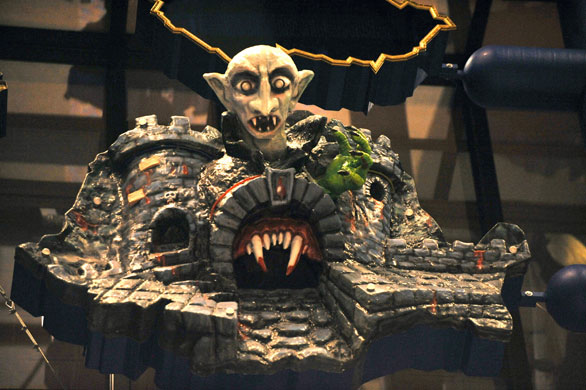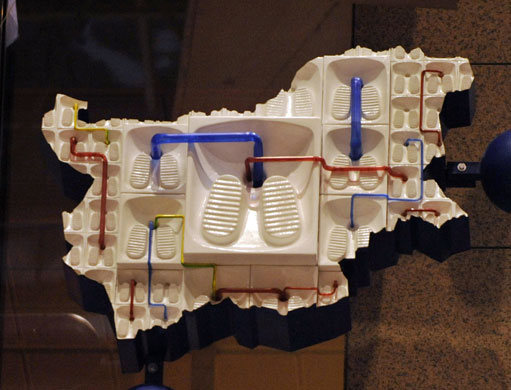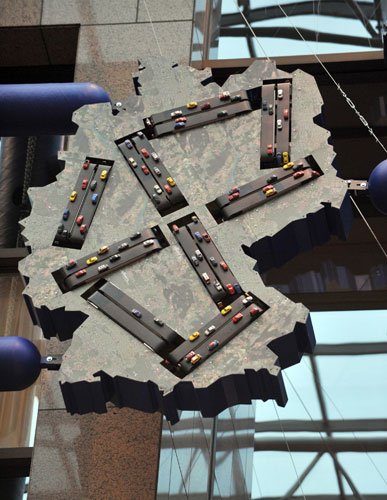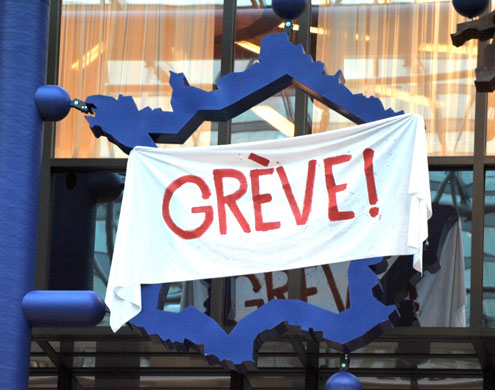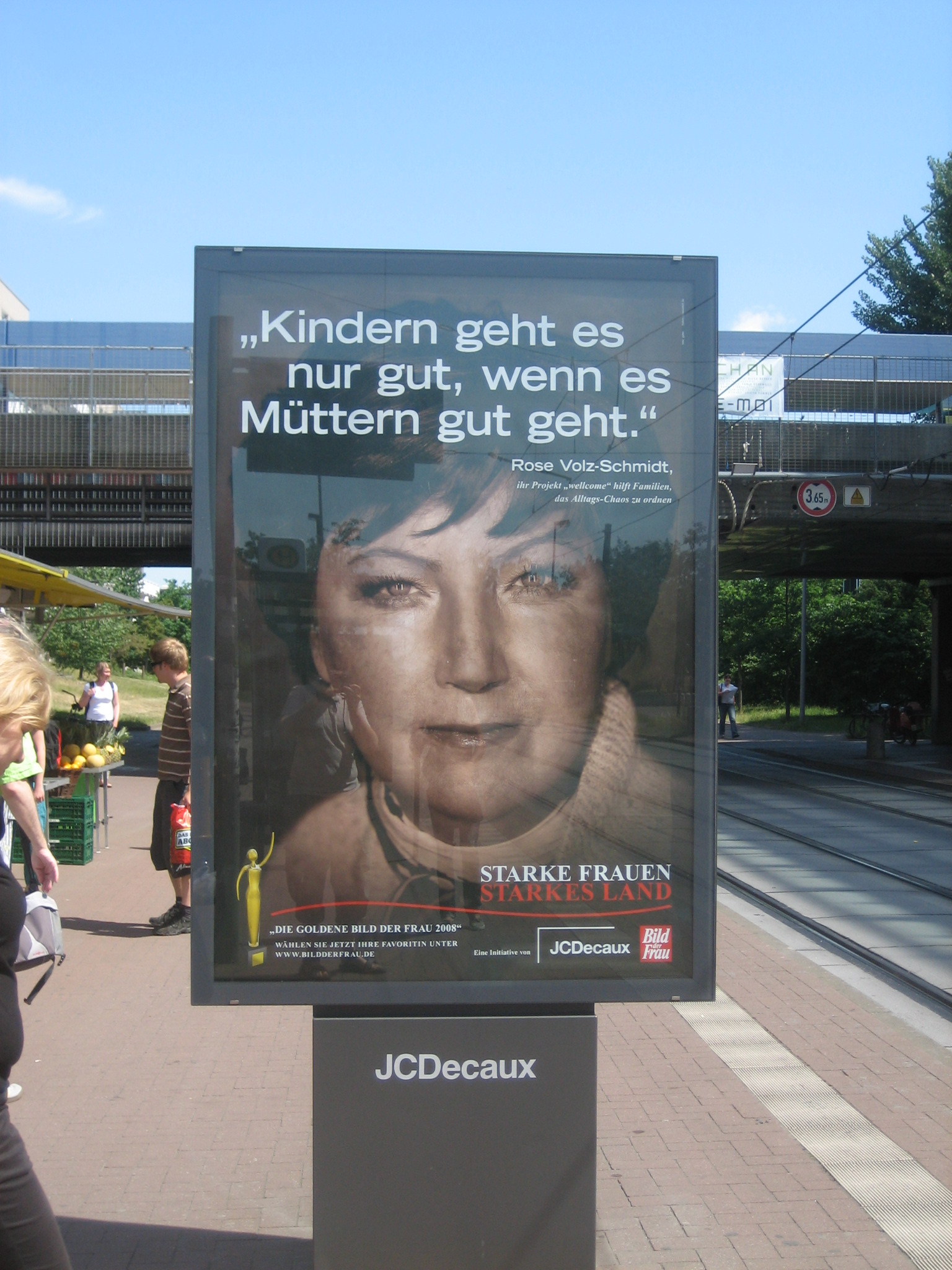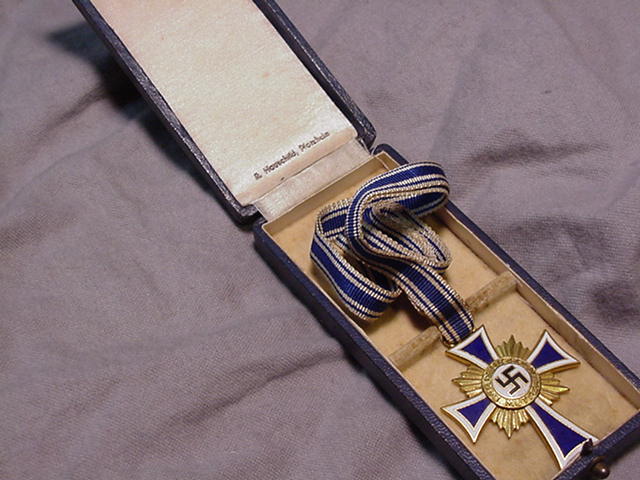In Race, Ethnicity, and Sexuality, Joane Nagel talks about the role that the intersections between ethnicity and sexuality play in nationalist projects–that is, how they are used as groups define who is and isn’t part of the entity defined as “the nation.” Those who are part of the nation are part of “us,” and those outside it are the Other. She brings up the example of Nazi Germany. Clearly ethnicity played a huge part in definitions of nationhood as the Nazis saw it. But as Nagel points out, it went beyond that; individuals were also included or excluded from membership based on other characteristics, including sexuality. Specifically, homosexuals were marked as unworthy of inclusion and were also sent to concentration camps.
This image, found at The Pink Triangle, illustrates the intersection ethnicity and various categories, including sexuality. It shows the various markers Nazis used to identify prisoners.
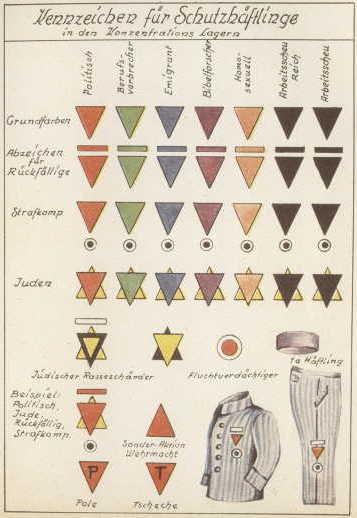
The bottom row of seven triangles clearly represents different categories of Jews. The fifth column of triangles (they look tan but they were pink) identified homosexuals. The third column (blue) was for immigrants. I believe the first column (red) was for political dissenters, but I’m not certain. We see other specified groups of Jews in the three partly-yellow triangles at the bottom, as well as triangles for Poles and Czechs. I don’t know enough German to figure the others out.
It’s a great example of a nationalist project: we can visibly see here the clear effort to define some groups as Others and the way that both ethnicity and sexuality (and the intersections) can be an important part of that, and even mark individuals as multiply stigmatized.
UPDATE: In comments philoserine and xac offered translations. Here’s xac’s:
[Columns]
red: political
green: professional criminal
blue: emigrant
purple: Jehovah’s Witnesses
pink: homosexual
black: work-shy Reich (not 100% sure wether the meaning here is “rich” or “member of the Third Reich” – more likely the last one though)
black: work-shy
[I thought I read somewhere that black might stand for antisocial, so maybe work-shy was how they defined that?]
[Rows]
1. row (triangles) base colour
2. row: label for reoffenders
3. row: penal camp
4. row: jews
5. row:
yellow triangle/black bordered triangle: jewish race desecrator
red circle with white border: under suspicion to escape
grey ring: ?? prisoner
6. row: left: Example: political jew, reoffender, penal camp
middle: special campaign Wehrmacht (?)
7. row: Pole
Czech
Thanks!
And Zeitzeuge says that “Special campaign Wehrmacht is a deserter from the Wehrmacht.”







